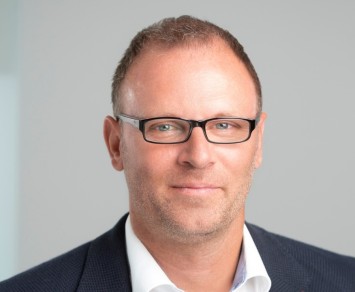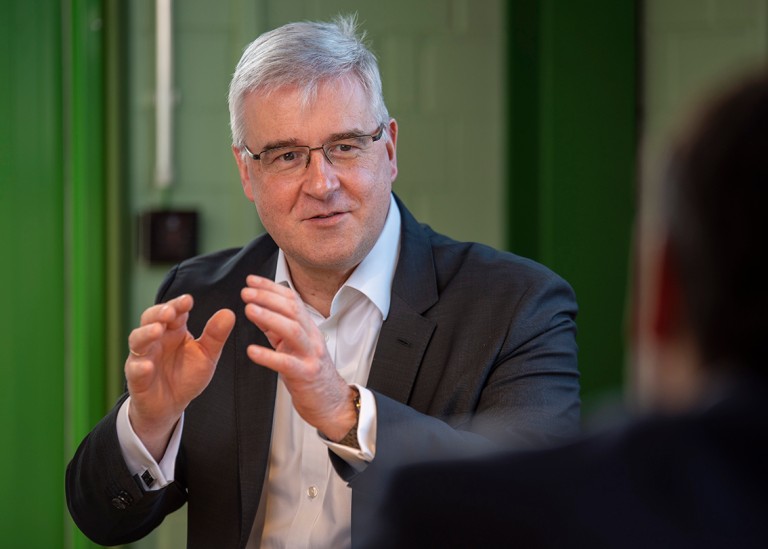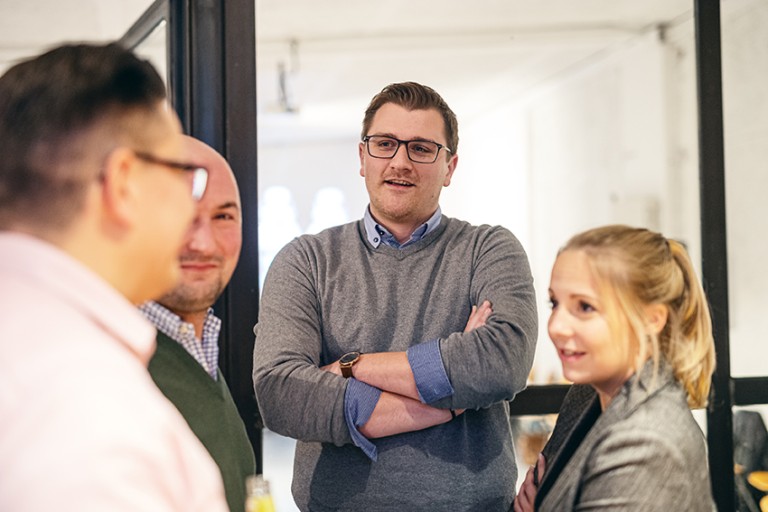Nothing is impossible
digital culture
Covid-19 has highlighted the need to digitize our society. What is thyssenkrupp Steel’s position on the way towards the digital future?
For our company, the pandemic has been a catalyst for more collaboration. In September 2019, we had already launched the Microsoft Teams platform enabling our employees to work together on projects from different offices and locations. From March 2020 on, Covid-19 has given a strong boost to this way of working. Within ten days, we had ten times more home office users and at least ten times more phone calls and video conferences. It all worked out pretty well, and the feared productivity losses did not materialize.
We all had to change our cultural mindset, of course. When teams are not able to work together in face-to-face interactions, this places special demands on executives. They must be more attentive and actively take care of their employees. In this regard at least, video conferencing outmatches telephone conferences. Yet they can hardly replace ‘water-cooler‘ conversations or chats in the canteen. In spite of these challenges, however, we have managed well to shift large parts of our day-to-day and project business to digital platforms.
Conversations and interactions via collaboration platforms are more open and transparent, as all members of a project team are equally involved. This means that coworkers can share more relevant knowledge and thus also work better.
Innovation is created through the free exchange of ideas, through the integration of different views and through clearly defined goals. In addition, an agile way of working can help us to use digital tools effectively. Maybe it’s the other way round, and it is the tool that promotes agility. In any case, the two belong together. To put it bluntly: Without the right way of working, the computer is just a typewriter.
Agility basically means working towards a goal in a self-organized manner. We define project teams and agree on goals to be achieved by a certain point in time. And yes, that is the way we work in our small and large strategic areas. Sometimes the task is to roll out a system, and sometimes it is the overarching goal of increasing customer satisfaction in a specific area. The aim of agility is to make people focus on one task and one goal. This not only increases productivity, but also makes work more satisfying. However, it is also clear that in order to digitize our entire steel mill, the milestones must be very clearly outlined. This is where my personal contribution to agility comes in.
A key goal in the strategy of digital transformation is optimizing the management of processes. The basic idea behind is to learn from data to better predict specific issues and provide targeted support to decision- makers. Hence, the question is how we use our treasure trove of data. We have a vast amount of data on hand: From sensor technology, from processes and from external data sources. More specifically, we are working, for example, with our transport partner on cross-company material tracking. This will enable us in future to tell our customer where his order is and when it will be delivered. We are also intensively working on the topic of Digital Twins, trying to find out where it could be useful for our business.
We will definitely have more digital tools at our disposal. At the interface with the customers, for collaboration, in processes and for decision-making. Artificial intelligence (AI) will be applied in areas that we currently cannot yet imagine. A digital twin can cope with complex challenges better than any system currently in place. And of course we will have to look into what this new potential benefit means for us as a company, for our customers and for society. The future will be interesting in any case, and we are ready to play an active role in shaping it.
Dr. Kranz, thank you for the interview!
For us, being digital means enabling an experimental way of thinking: Testing, learning and developing, whichever is best for us. Therefore, our digital collaboration is characterized by the fact that no longer individual employees develop a solution from start to finish, but that a solution is continuously advanced in exchange with others from a large network.
Working in smaller teams allows us to be faster and more flexible and thus find first solutions that can be tested and improved with timely feedback from departments and customers.
Our digital culture enables us to deliver results faster. It emphasizes action. Planning and decision-making were shifted from a long-term to a short-term focus. We equipped all employees with methods and procedures so that they can work more networked, learn across their departments and generally be more innovative. The key building blocks on the way to this new collaboration have been our Digital Labs, our smart steel natives community and the smart steel pioneers program.
Besides the large-scale projects, the digitization map of thyssenkrupp shows a multitude of smaller projects: They close the digitization gaps in logistics, optimize maintenance and ultimately contribute to the smooth and efficient processing of orders. The “Digital Innovation“ Team see a lot of potential on the premises with their extensive rail networks, the raw material ports and material warehouses. In so-called “Digital Labs“, the experts develop - together with their and for their co-workers from the respective departments - touchable prototypes within a few weeks: Solutions addressing the specific challenges and making everyday work easier. The result, for example, is an app for mobile inventory management of steel scrap or a track-and-trace solution that allows the current location of coal and ore deliveries from Rotterdam to be retrieved in real time. The young team has developed more than 20 such solutions in the past three years. The Augmented Reality application "smart insight", which enables maintenance staff to look inside a machine using virtual "X-ray vision", was also developed to its first application in the lab. “The development phase of two to four weeks is quite short, but also very intensive. We discuss a lot. This often creates a huge dynamic. At the end of this phase, you usually like the developed product so much that you would like to continue to work on it”, says Tim Rupp. He and Tobias Eckhoff are members of the core team of the Digital Labs. “We work very independently, and at the same time we work together with almost all departments of our company“, says Tobias Eckhoff. “On the one hand, we are IT experts, and on the other hand, we are change managers and cultural ambassadors. It is also our task to win over more and more colleagues to digitization topics“.
Contact

Volker Lang
Head of Digital Transformation & Innovation
thyssenkrupp Steel Europe AG
Kaiser-Wilhelm-Strasse 100
47166 Duisburg
Telephone: +49 (0)203 52-47749
Send email
thyssenkrupp Steel Europe
Marcus van Marwick
Head of Communications
Telephone: +49 203 52 41005
Send email

